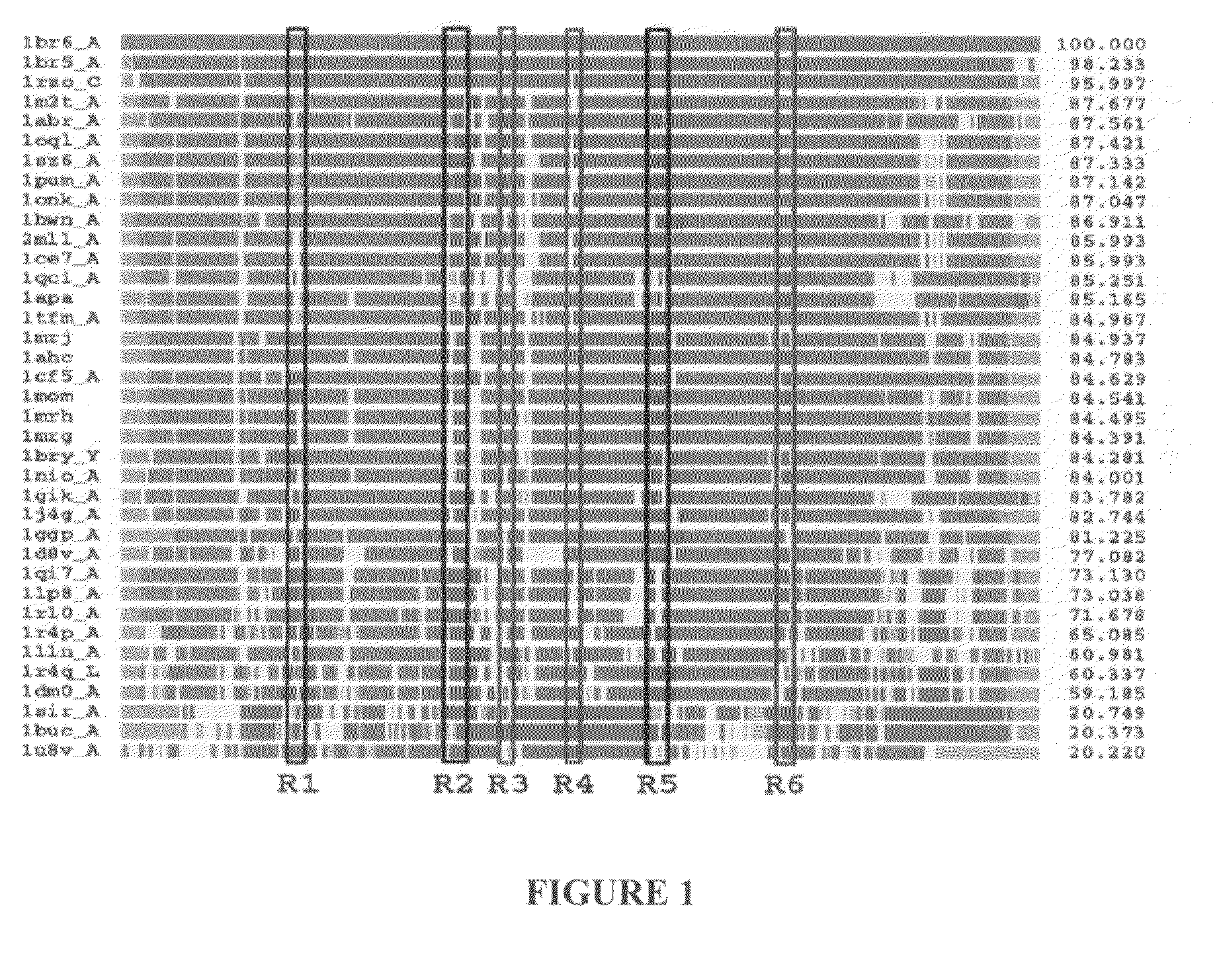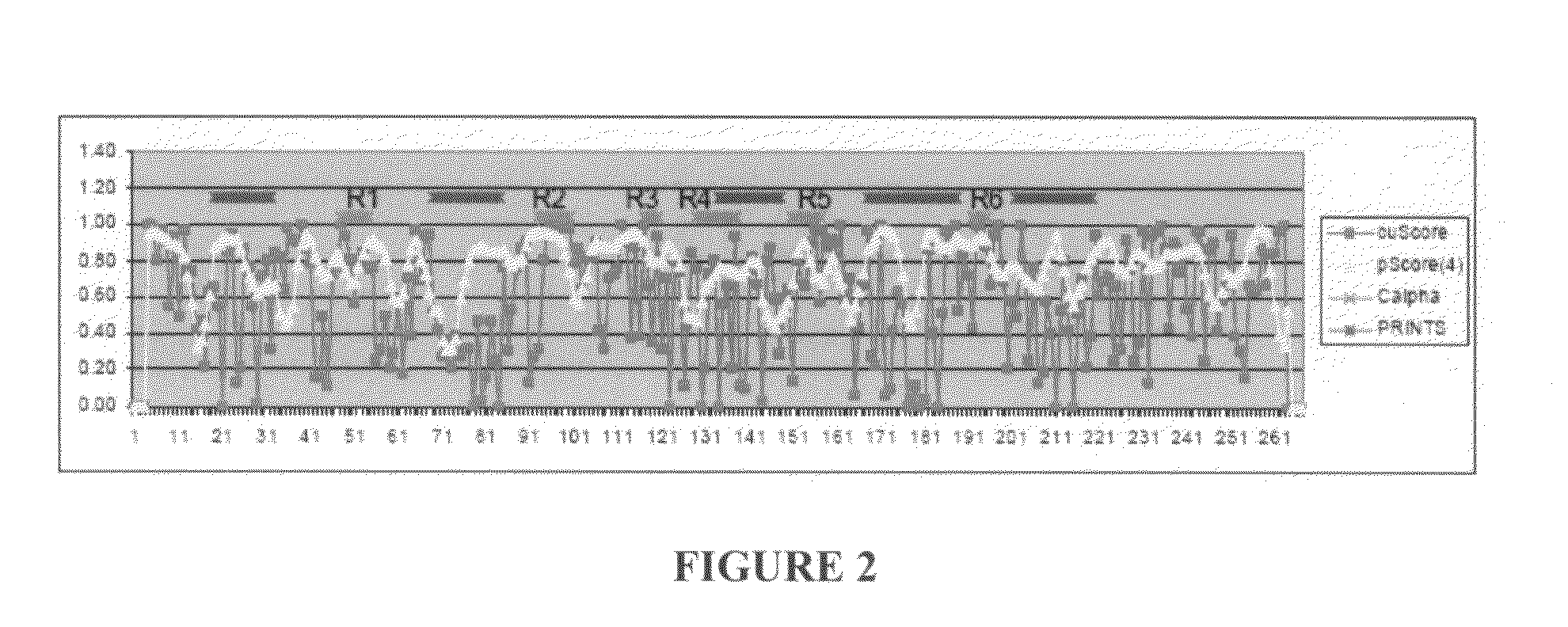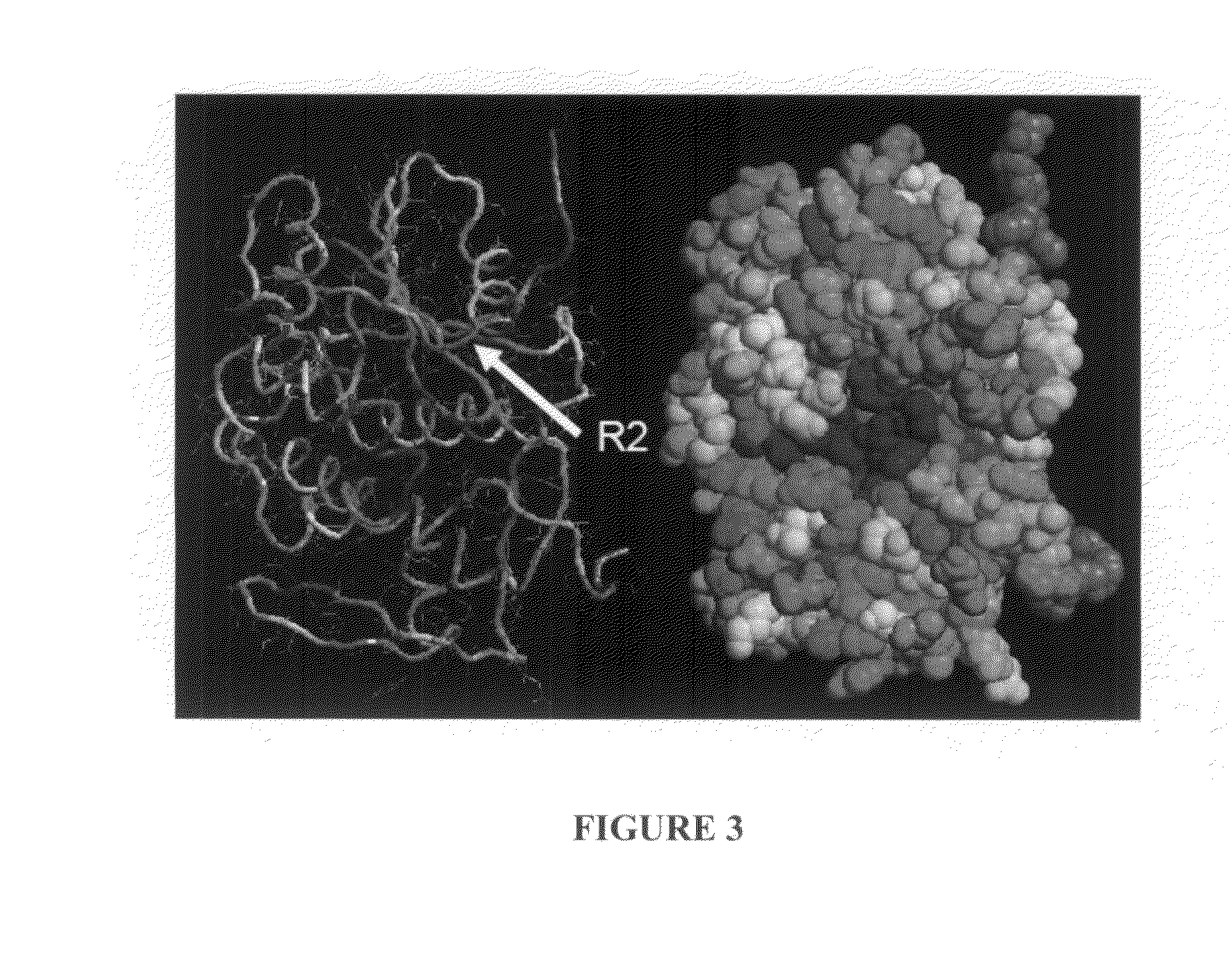Structure-Based Analysis For Identification Of Protein Signatures: CUSCORE
a structure-based analysis and protein signature technology, applied in the field of bioinformatics, can solve the problems of non-computational methods, antibody generation or compound library screening, and low use value of information
- Summary
- Abstract
- Description
- Claims
- Application Information
AI Technical Summary
Benefits of technology
Problems solved by technology
Method used
Image
Examples
example 1
The Identification of Conserved / Unique Signatures in the A chain of Ricin
[0083]An entry (ID=RICI_RICCO, P02879) from the SHIGARICIN family of the PRINTS database of virulence factors as a reference sequence for our analyses of the A chain of ricin. Of the 21 PDB structures of the ricin A chain, the three non-redundant, non-mutant structures that had been solved with highest resolution (PDB entries 1br6, 1br5 and 1rz0) to include in the target set for our structure-based analyses were selected. These structures had sequence similarity between 93 and 100% (and corresponding structure-similarity LGA_S score between 95 and 100%) to the ricin A reference. Using the AS2TS (Zemla et al., 2005) automated homology-based protein structure modeling system, PDB entry lbr6 was selected as the 3D model structure of the ricin A reference sequence, because it had the greatest sequence similarity (100% sequence identity) and structure completeness from among available PDB structures (100% of structu...
example 2
Identification of Conserved / Unique Signatures in the West Nile Virus Envelope Glycoprotein
[0092]The method of the present invention was also used to identify motifs on the envelope glycoprotein of West Nile virus that satisfy conditions of a) conservation / uniqueness with respect to WNV, versus b) potential cross reactivity with other Flaviviruses. Data from the literature was then used to evaluate the success of these predictions. These analyses suggest that PSE correctly predicted conservation / uniqueness and excluded motifs for which targeted detection reagents would likely cross react with other Flaviviruses.
[0093]The envelope glycoprotein of West Nile virus (refseq strain) was selected as the reference sequence and was blasted against the non-redundant (NR) protein database to capture related Flavivirus sequences. The subject and query sequences were then modeled using AS2TS.
[0094]Sequences and models were analyzed using the present method for identification of protein signatures...
PUM
 Login to View More
Login to View More Abstract
Description
Claims
Application Information
 Login to View More
Login to View More - R&D
- Intellectual Property
- Life Sciences
- Materials
- Tech Scout
- Unparalleled Data Quality
- Higher Quality Content
- 60% Fewer Hallucinations
Browse by: Latest US Patents, China's latest patents, Technical Efficacy Thesaurus, Application Domain, Technology Topic, Popular Technical Reports.
© 2025 PatSnap. All rights reserved.Legal|Privacy policy|Modern Slavery Act Transparency Statement|Sitemap|About US| Contact US: help@patsnap.com



